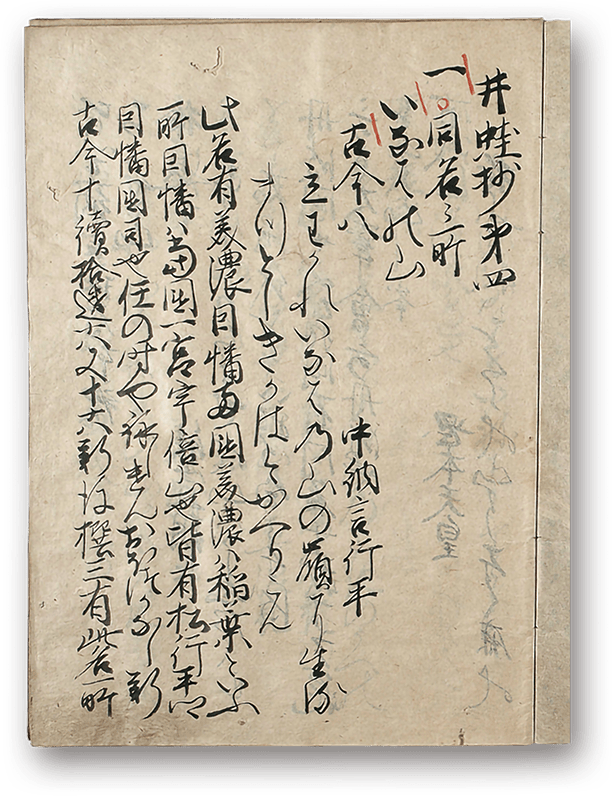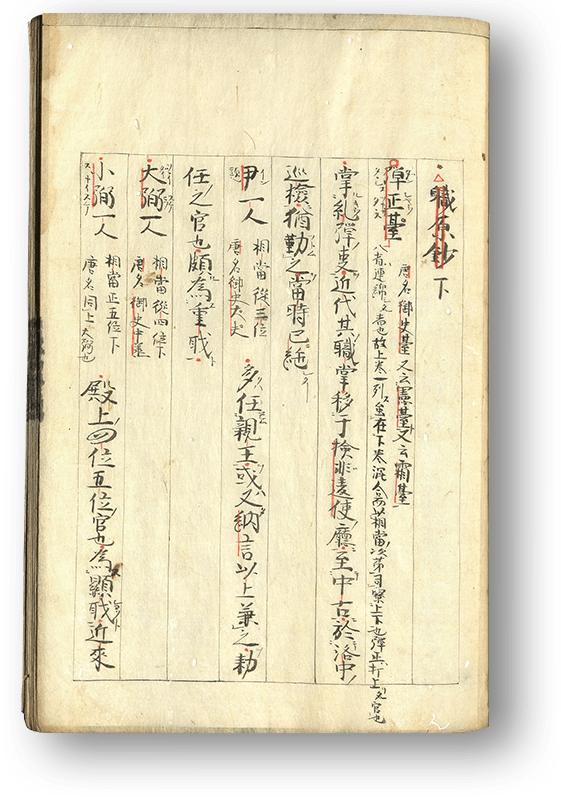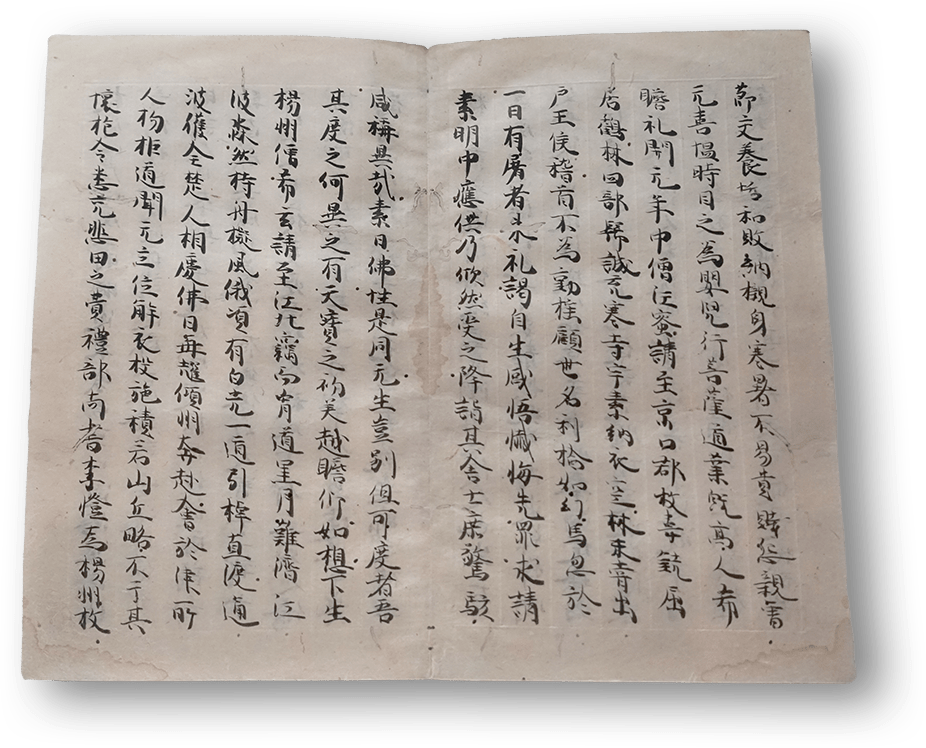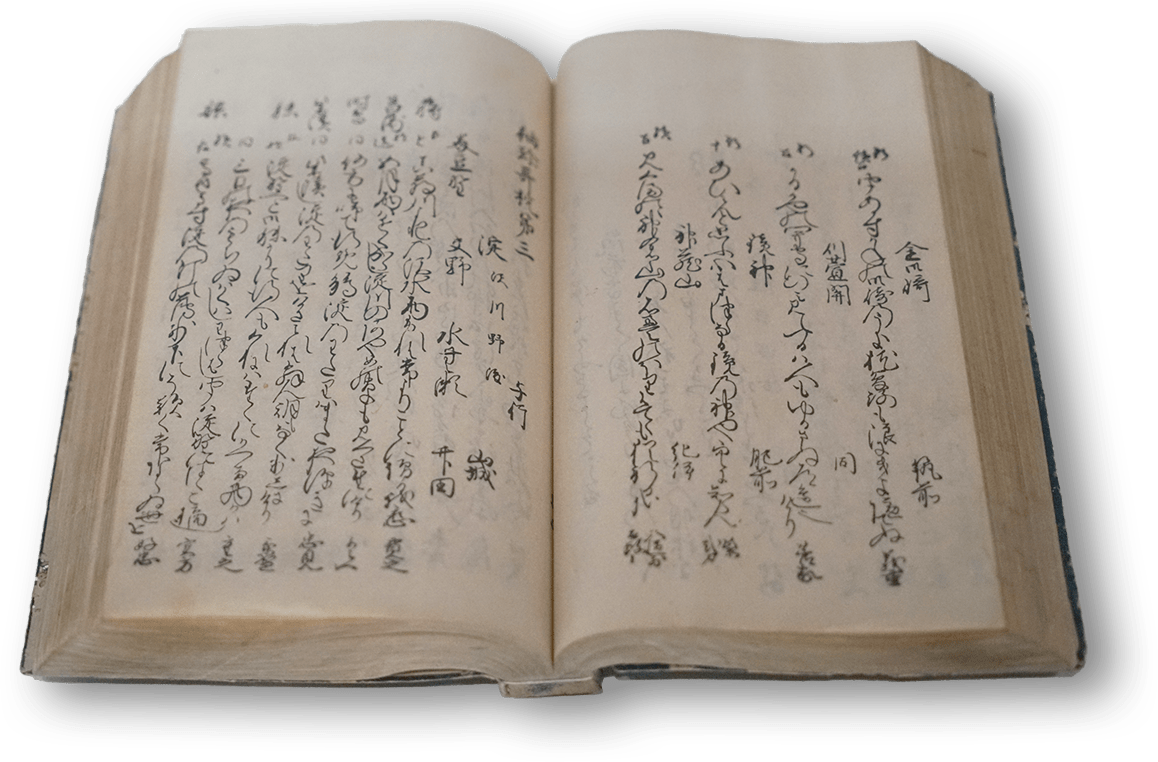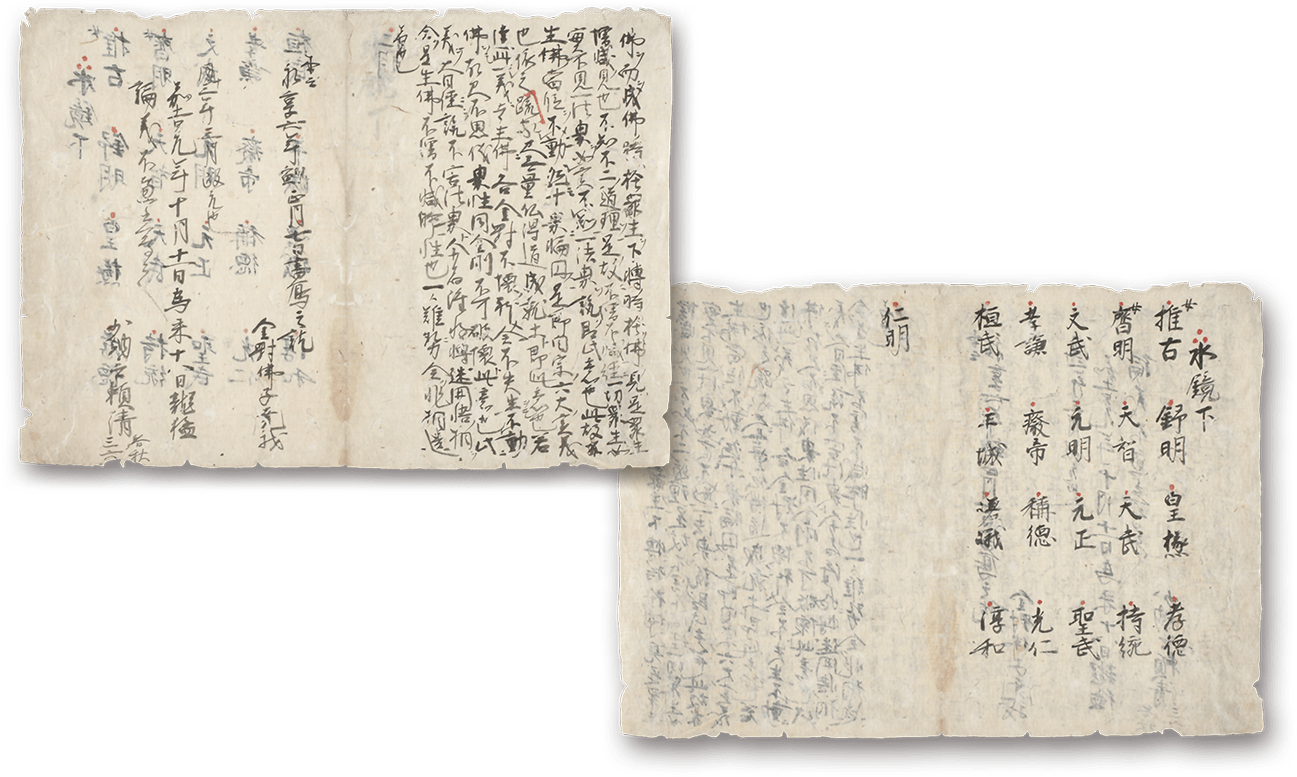Ryōshi and Related Matters - 料紙・附属事項
The body of a Japanese book is generally made of paper. The following explains various kinds of paper used for Japanese books and matters related to ryōshi.和書の本体部分は、通常は紙で作られています。ここでは和書に用いられるさまざまな紙と、料紙に附属する事項について解説します。
Ryōshi - 料紙
Ryōshi (honbun ryōshi) is paper used for the body excluding the covers in a Japanese book. The following shows examples of major ryōshi for Japanese books.和書のうち、表紙以外の本体部分に使われている紙を料紙(本文料紙)と呼びます。ここでは、和書の料紙の代表的なものを例示します。
Ryōshi - 料紙
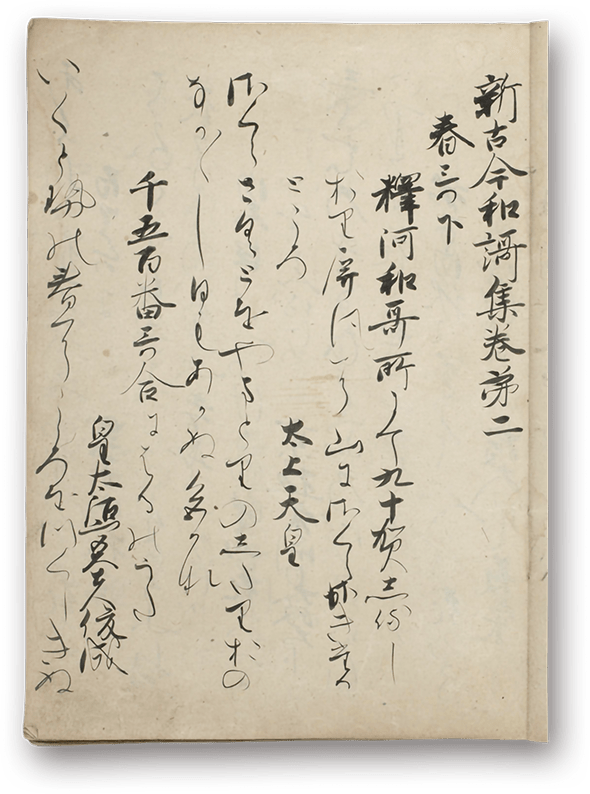
Shin Kokin Wakashū - 新古今和歌集
Torinoko-gami (Atsuyō Hishi) - 鳥の子紙(厚様斐紙)
Thick-made hishi, which is made from the skin of a plant called ganpi (Diplomorpha sikokiana ). Called torinoko-gami because its color looks like tori-no-ko or a hen's egg. Its surface is smoother than choshi.雁皮の樹皮を材料とする斐紙のうち、厚く漉いたもの。鶏の卵のような色であることから鳥の子紙と言う。楮紙に比べて表面がなめらかである。
Ryōshi - 料紙
Choshi - 楮紙
Paper made from the skin of a plant called kozo (hybrid mulberry tree, Broussonetia kazinoki x papyrifera ). Most widely used as ryoshi for Japanese books. Called Mino-gami or Sugihara-gami depending on its place of manufacture.楮の樹皮を材料として作られた紙。和書の料紙として最も広く用いられる。産地により、美濃紙・杉原紙などと呼ばれることがある。
Ryōshi - 料紙
Maniai-gami - 間合紙
Maniai-gami is paper made so that its length is aligned to the width of a fusuma sliding door (about 1 meter). Doro-maniai-gami, made by mixing hishi and mud, was also used for books.長さを襖障子の幅(約一メートル)に合わせて漉いた紙が間合紙であるが、斐紙に泥土を交ぜて漉いた泥間合紙が書物にも用いられた。
Ryōshi - 料紙
Shukushi (Sukikaeshi-gami) - 宿紙(漉き返し紙)
Paper remade from waste paper. Grey due to the ingredients of Indian ink. Along with original shukushi, there is paper that is made by mixing Indian ink to make it look like shukushi.反古紙を漉き返して作った紙。墨の成分によって薄墨色を呈する。ただし本来の宿紙のほか、墨を交ぜて漉き、宿紙に似せた紙もある。
Others - その他
Others - その他

Pagination (Chōzuke) - 丁付
Pagination is the process of using numbers to indicate which number the leaf is in a sasshibon book.冊子本において、その丁が何丁目に当たるかを記した数字が丁付です。
Others - その他
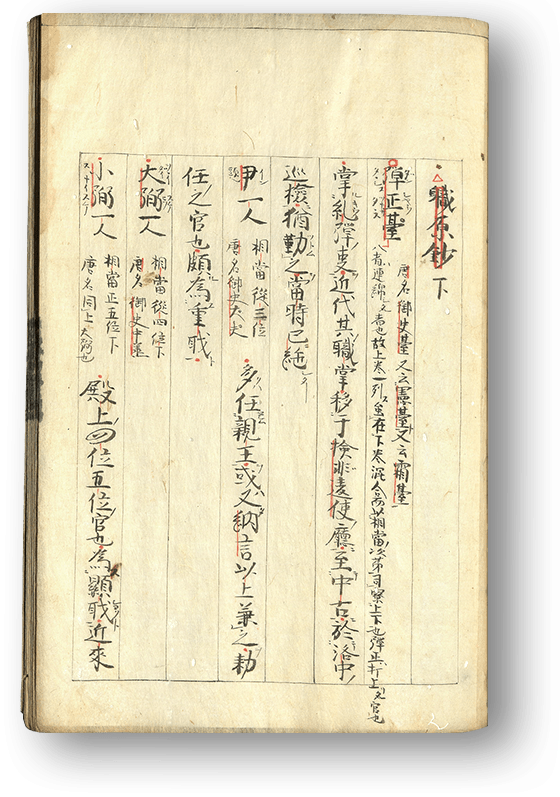
Shokugen Shō - 職原抄
Ruled Lines (Kai and Kei) - 界・罫
Ruled lines are lines to align characters with the upper and lower edges of or the space between sentences on a manuscript book. Some printed books also have ruled lines.写本において、上下や行間を揃えて書くために引かれた線が界(罫)です。版本にも、界を持つものがあります。
Others - その他
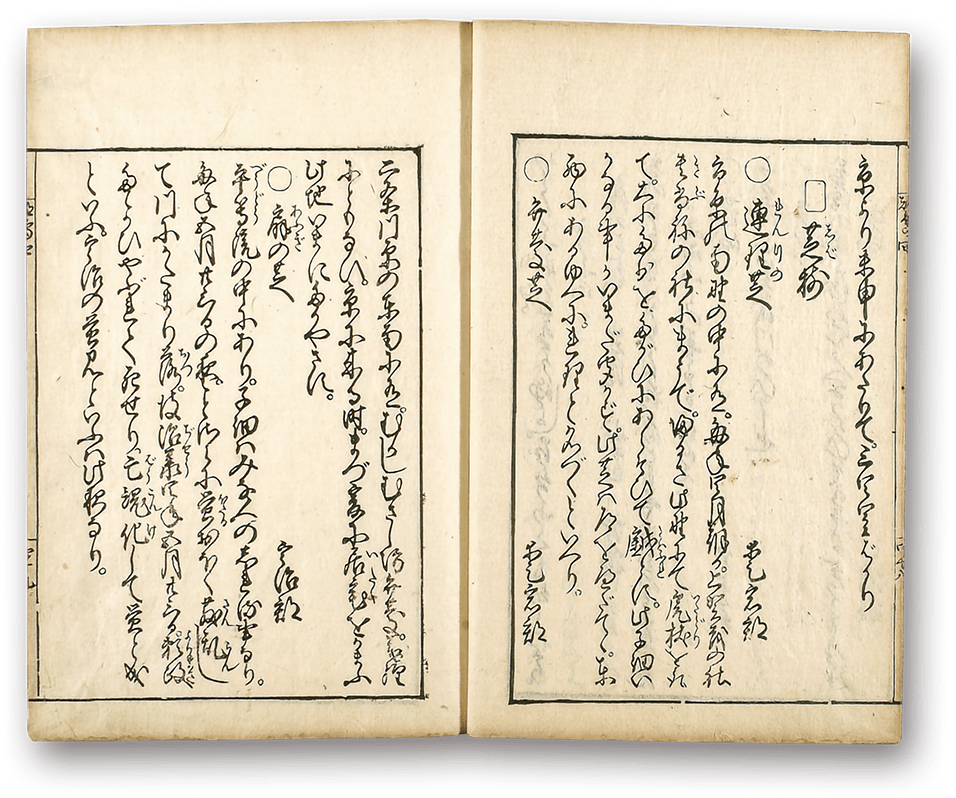
Meisho Miyakodori - 名所都鳥
Kyōkaku - 匡郭
Kyōkaku is a frame line surrounding the text of a printed book. It is called tanpen(single line), sōhen, komochi-waku(thick line with thin line inside) or others depending on the type of the line.版本において、本文の周囲に引かれた枠線を匡郭と言います。線の種類により、単辺・双辺・子持ち枠などと呼びます。
Others - その他
Shihai Monjo - 紙背文書
In the case of kansubon, orihon or sasshibon books that use paper sheets folded in two, pieces of paper on which something has already been written may be used by turning them the other way. In this case, the original book is called shihai monjo.巻子本・折本や紙を二つ折りにして使う冊子本で、既に何かが書かれていた紙を裏返して用いることがあり、その場合の元の文書を紙背文書と呼びます。

